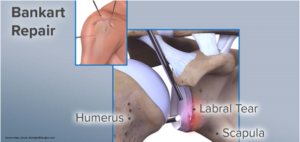Patient Review
- Patient’s Name: Mr. Ajay Bansal
- Patient’s Age: 20
- Patient’s Gender: male
Symptoms
- Severe shoulder pain
- The sensation of the shoulder feeling lose
- Slipping in and out of the joint
Case Presentation
“A dislocated shoulder” – just saying the words is enough to make you feel the pain. Because of all the joints in the body, our shoulders have the highest range of motion. It allows us to lift, grip, and move about effortlessly. When a shoulder is dislocated, it can be tough to function daily.
Accidents are the most common cause of dislocated shoulders; however, congenital disorders can also cause them.
If your shoulder is dislocated, you will experience severe and instant pain. The apex of the humerus’ rotator cuff will feel out of place. Your deltoid muscle will also be unable to move your arm. You may also experience numbness in your arm due to nerve injury.
After your initial shoulder dislocation, you have a 90% chance of relapsing. This is especially true for young people under the age of 20. This is because a dislocated shoulder is more than just a joint problem. It’s an injury to the muscle and other soft tissues around it, such as tendons and ligaments. These are the muscles and tissues that aid in the joint’s stability. The shoulder joint is compromised when these soft tissues are ripped or injured due to a dislocated shoulder. It’s also possible that it will dislocate again.
Some patients’ shoulders will dislocate regularly, regardless of their everyday activity. In some cases, involving athletes, mainly contact sports players, surgery to treat a recurring dislocated shoulder may be required. If there is a cartilage tear in the socket of the shoulder joint, this is typically required. This is because the top of the shoulder will need to be sewed back into place for it to be secure again.
Arthroscopic surgery has become a common and highly effective therapeutic option for dislocated shoulders. Because the shoulder joint is placed deep beneath the skin, this is the case.

Patients with a dislocated shoulder can benefit from the Arthroscopic Bankart Repair treatment. Arthroscopic Bankart repair results are comparable to those of open surgery. With a well-performed arthroscopic treatment, the probability of a redislocation is less than 5%. The goal of surgery is to get individuals back to their normal sporting and work activities.
General anesthesia is used for arthroscopic Bankart repair. It takes around an hour to perform the surgery. Patients are usually admitted to the hospital for one night. After seeing a physiotherapist and meeting with their surgeon, they will be discharged from the hospital the next day.
An Overview of the Case
A 20 years young male, Mr. Ajay Bansal, consulted Dr. Sandeep Singh, a seasoned orthopedic doctor in Bhubaneswar, Odisha. The patient told about a previous shoulder injury that resulted in dislocation. Currently, the patient was in excruciating shoulder pain and had difficulty moving it, with the sensation that it was loose and slipping in and out of the joint.
Dr. Sandeep Singh examined the patient thoroughly and recommended an MRI scan. The MRI examination revealed a dislocated shoulder.
Dr. Sandeep Singh explained the diagnosis and the need for surgery to the patient. Further, Dr. Singh operated on the patient and treated his dislocated shoulder with Arthroscopic Bankart repair.
The doctor prescribed antibiotics and pain medications. Dr. Singh also suggested physiotherapy for a swift recovery. The patient progressively healed and, within a few weeks, regained full range of motion. Rehabilitation enhanced by technology gives near-perfect results post arthroscopic Bankart repair for recurring shoulder dislocation.
Treatment and Prognosis
- Arthroscopic Bankart Repair
Physical Examination & Tests
- MRI scan
Post-Operative Assessment
- Simple shoulder stretches
- Physiotherapy
Feedback
Fill in the Form for Speedy Appointment
